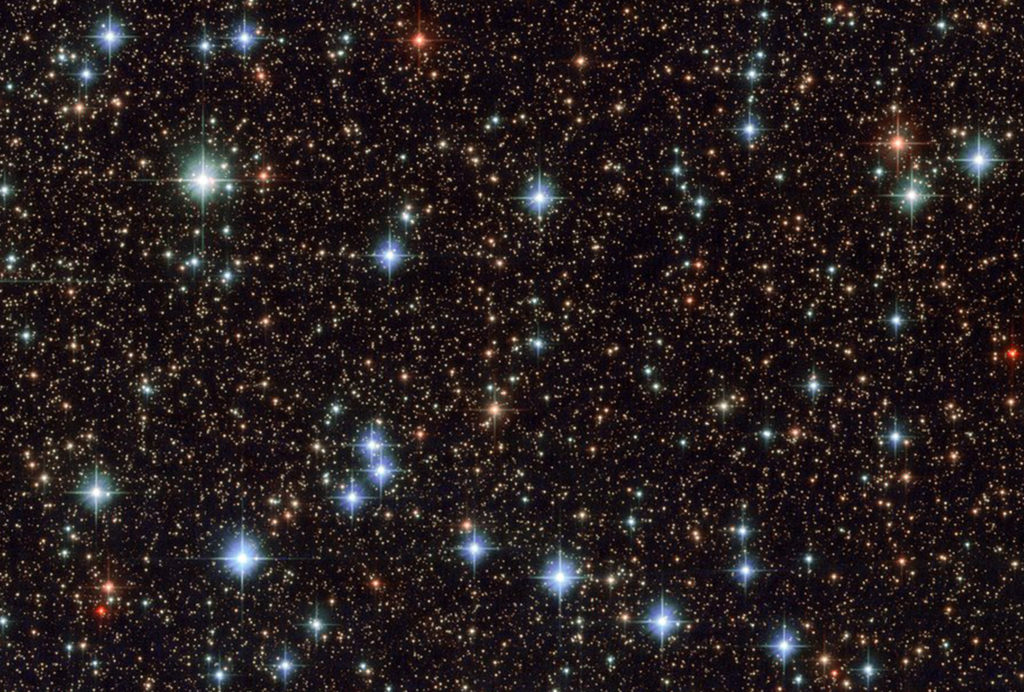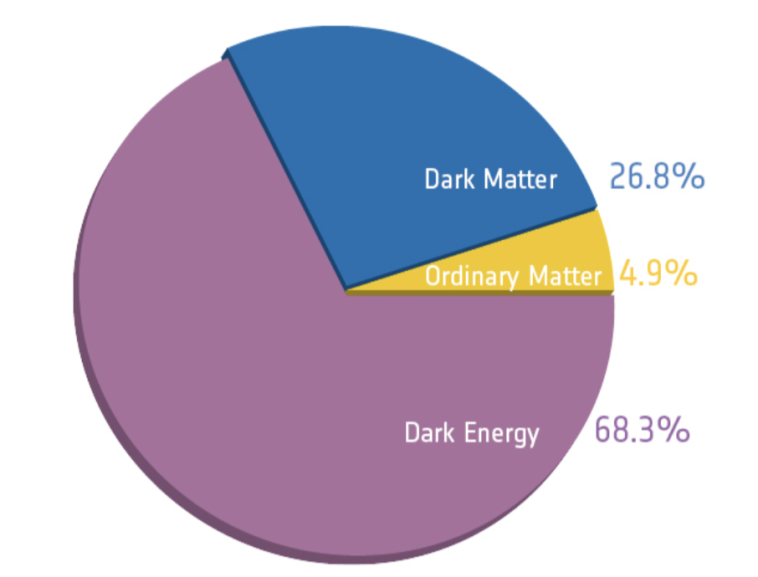Cosmology is the study of the universe’s laws and contents using the distribution of matter and light throughout space as a gigantic laboratory. In particular, cosmologists hope to understand what the contents of the universe are, how it began, and how the rich structure we observe now—such as galaxies—emerged from its initial conditions billions of years ago.
Modern cosmology is built on numerous important data sets, but we focus here on three major pillars: the cosmic microwave background (CMB), large-scale surveys of galaxy clustering, and the measurement of supernovae over a range of distances. The CMB is light (or photons) left over from the moment the universe became cool enough to be neutral, roughly 380,000 years after the Big Bang; the density at that time imprinted on the light and it comes to us from then essentially unaltered, much like a baby picture of the universe. Large-scale surveys of galaxy clustering use the subtle correlations in the spatial distribution of galaxies to probe the later-time behavior of the universe: roughly, its adolescence. Finally, astronomers use supernovae, exploding stars, as “standard candles,” which have a known, standard energy output, to map the universe’s near-present-day behavior.
In combination, these methods have shown us that the universe is roughly 14 billion years old, and is about 5 percent regular matter (like hydrogen, helium, etc.), 27 percent dark matter, which clusters gravitationally but does not interact with light, and 68 percent dark energy, which is mysterious and acts like a constant energy density associated with empty space (“the vacuum”) and has negative pressure.
It is this dark energy that the DESI experiment seeks to explore. Most familiar substances have positive pressure: if you squeeze a balloon, it pushes back. If you squeeze dark energy, it would contract further; conversely, if you pull out on it, dark energy will expand even more. Thus, it is able to drive an accelerated expansion of space-time itself, which we initially discovered using supernovae and now probe more fully with surveys of galaxy clustering. Unfortunately, it is not predicted by the Standard Model of particle physics, and its essential nature remains unknown.
Theoretical physicists have proposed a wide range of possible causes of the cosmic acceleration, but all have challenges or objections. The most famous explanation is the cosmological constant, which can be traced back to Albert Einstein. In this theory, space is intrinsically filled with a tiny level of vacuum energy, resulting from a slight missed cancellation in the quantum mechanics of elementary particles. But we don’t know why the value of the cosmological constant would be so small and yet nonzero, nor can we derive it from our elementary particle theories.
Other ideas involve new forces of nature, modifications of the theory of gravity, or novel effects of quantum gravity. We don’t know. But some of these theories predict measurable differences in cosmological observables, and it is these differences that DESI will attempt to detect.









